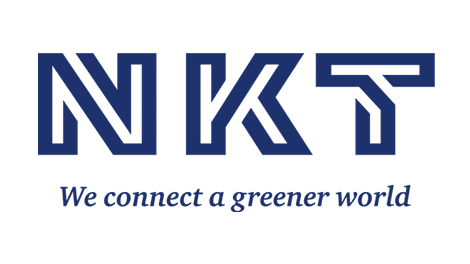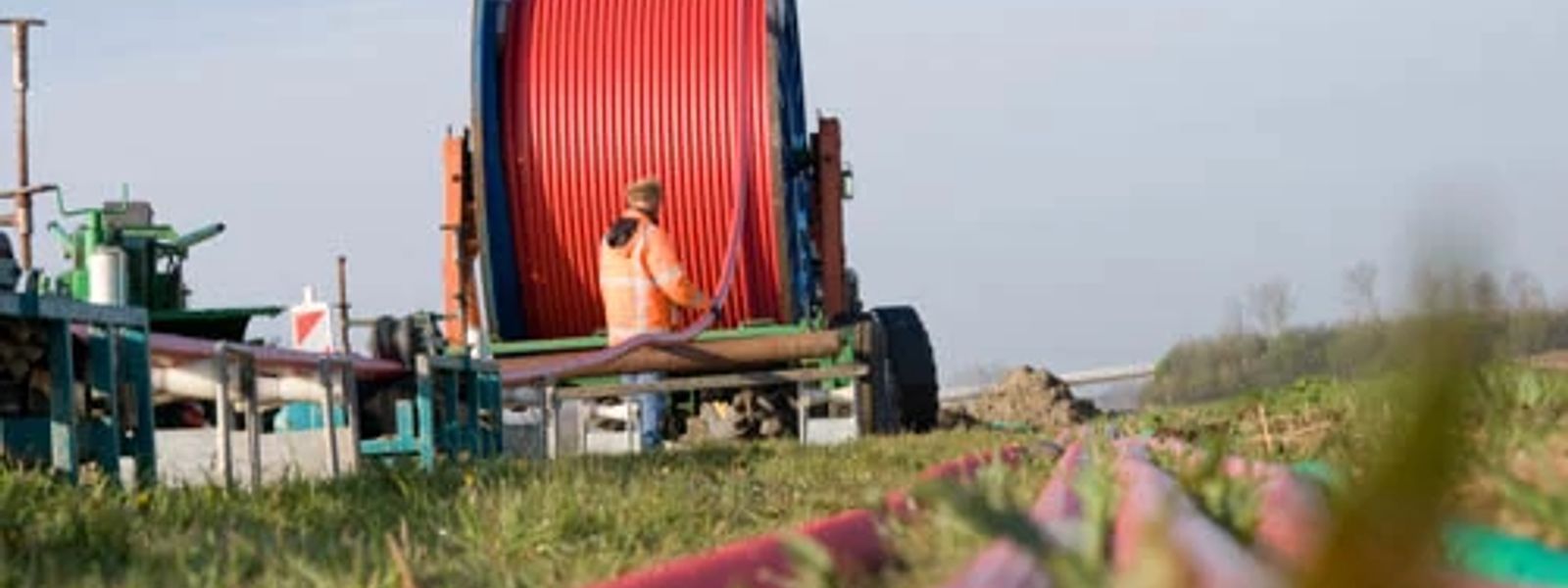NKT – NKT signs framework agreement for medium-voltage power cables supporting Dutch grid upgrade
To support growing renewable energy production and the need to upgrade and modernize the regional power grid, Dutch distribution system operator Enexis has entered into a long-term framework agreement with NKT to deliver medium-voltage power cables.
Over the next eight years, Enexis Netbeheer intends to lay several thousand kilometres of underground power cables to expand the power grid in the Dutch provinces of Groningen, Drenthe, Overijssel, Brabant and Limburg to prepare for an increasing amount of renewable energy. The long-term framework agreement with NKT will secure supply of the necessary medium-voltage power cables. NKT will deliver approximately 600 km of power cables per year over the next eight years. The framework agreement includes an option to extend for an additional four years.
– We are delighted that NKT will be a supplier for our expansion operation over the coming years. We want to guarantee supply security of the requisite cables on par with increasing volumes, which is why we are scaling up the number of power cable suppliers. For the Enexis service area alone, we need a total power cable length that would take us around the world twice. We are really talking about a staggering amount of cable. We look forward to our future collaboration, says Rutger van der Leeuw, CEO at Enexis.
– We are proud to be a key supplier. We have a long history with Enexis and have supplied medium-voltage cables to many projects over the years. We look forward to strengthening our relationship even further with this framework agreement supporting their efforts to upgrade the Dutch electricity grid as well as connect more renewables projects, says Carlos Fernandez, EVP Applications, NKT.
The majority of the medium-voltages power cables will be produced at the factory in Asnaes, Denmark, which is being expanded in the coming years as part of NKT’s announced investments across three medium-voltage manufacturing sites.
In 2023, 48 percent of the Netherland’s electricity was generated from renewable sources such as solar, wind and water. The amount of electricity produced from wind energy in 2023 increased by 35 percent year-on-year, while solar energy increased by 24 percent. This growth is set to continue, and more distribution power cables are needed to connect these projects to the power grid.
Key facts:
- Enexis is a Dutch Distribution System Operator (DSO).
- In 2023, Enexis had approximately 6,000 employees and 5.2 million customer connections.
- Enexis manages more than 150,000 km of electricity cables.
- NKT will begin supplying medium-voltage power cables from mid-2025 onwards under this framework agreement.
- NKT will deliver approximately 600 km of power cables per year under the agreement
- The majority of the power cables be produced at NKT’s factory in Asnaes, Denmark.
SourceNKT
EMR Analysis
More information on NKT: See the full profile on EMR Executive Services
More information on Claes Westerlind (President and Chief Executive Officer, NKT): See the full profile on EMR Executive Services
More information on Carlos Fernandez (Members of the Global Leadership Team, Executive Vice President, Head of Applications Business, NKT): See the full profile on EMR Executive Services
More information on Enexis Netbeheer: https://www.enexis.nl/ + Gas and electricity. We cannot (yet) do without them. They are the engine of our existence. Our economy. Through our cables and pipes we bring the energy to your home and work.
Enexis Netbeheer is one of the 6 regional grid operators in the Netherlands. Our most important task as a grid operator is to construct and maintain the gas and electricity grid in the Netherlands. We also provide for the transport of energy. We transport energy from solar parks and windmills to your home or business.
More information on Rutger van der Leeuw (Chief Executive Officer, Enexis Netbeheer): https://www.enexisgroep.com/corporate-governance/executive-board/executive-board-profile/ + https://www.linkedin.com/in/rutgervanderleeuw/
EMR Additional Notes:
- Extra Low-Voltage (ELV):
- Voltage of 50V or less (AC RMS), or 120V or less (ripple-free DC).
- Low-Voltage (LV):
- The International Electrotechnical Commission (IEC) defines supply system low voltage as voltage in the range 50–1000 V AC or 120–1500 V DC.
- Medium-Voltage (MV):
- Medium-voltage circuit breakers rated between 1 and 35/72 kV.
- High-Voltage (HV):
- The International Electrotechnical Commission define high voltage as above 1000 V for alternating current, and at least 1500 V for direct current.
- Super High-Voltage or Extra High-Voltage (EHV):
- Is >300kV.
- Ultra High-Voltage (UHV):
- Is >1.000kV.
- Grid, Microgrids, DERs and DERM’s:
- The power grid is a network for delivering electricity to consumers. The power grid includes generator stations, transmission lines and towers, and individual consumer distribution lines.
- The grid constantly balances the supply and demand for the energy that powers everything from industry to household appliances.
- Electric grids perform three major functions: power generation, transmission, and distribution.
- A microgrid is a small-scale power grid that can operate independently or collaboratively with other small power grids. The practice of using microgrids is known as distributed, dispersed, decentralized, district or embedded energy production.
- Smart Grid is any electrical grid + IT at all levels . Micro Grid is a group of interconnected loads and DERs (Distributed energy resources) within a clearly defined electrical and geographical boundaries witch acts as a single controllable entity with respect to the main grid.
- Distributed energy resources (DERs) are small-scale electricity supply (typically in the range of 3 kW to 50 MW) or demand resources that are interconnected to the electric grid. They are power generation resources and are usually located close to load centers, and can be used individually or in aggregate to provide value to the grid.
- Common examples of DERs include rooftop solar PV units, natural gas turbines, microturbines, wind turbines, biomass generators, fuel cells, tri-generation units, battery storage, electric vehicles (EV) and EV chargers, and demand response applications.
- Distributed energy resources management systems (DERMS) are platforms which helps mostly distribution system operators (DSO) manage their grids that are mainly based on distributed energy resources (DER).
- DERMS are used by utilities and other energy companies to aggregate a large energy load for participation in the demand response market. DERMS can be defined in many ways, depending on the use case and underlying energy asset.
- Transmission System Operator (TSO):
- A Transmission System Operator (TSO) is an entity entrusted with transporting energy in the form of natural gas or electrical power on a national or regional level, using fixed infrastructure. The term is defined by the European Commission.
- Distribution System Operators (DSO):
- Entities responsible for distributing and managing energy from the generation sources to the final consumers. Digitalisation is the key to securing the DSO model, which requires investments in automation, smart meters, real-time systems, big data and data analytics.
- A DNO (Distribution Network Operators) already performs much of the tasks that a DSO does, but there are differences. A conventional distribution network is not an active but a reactive or passive network. Passive distribution networks are designed to accept bulk power from transmission system and distribute it, down the network, to consumers.


